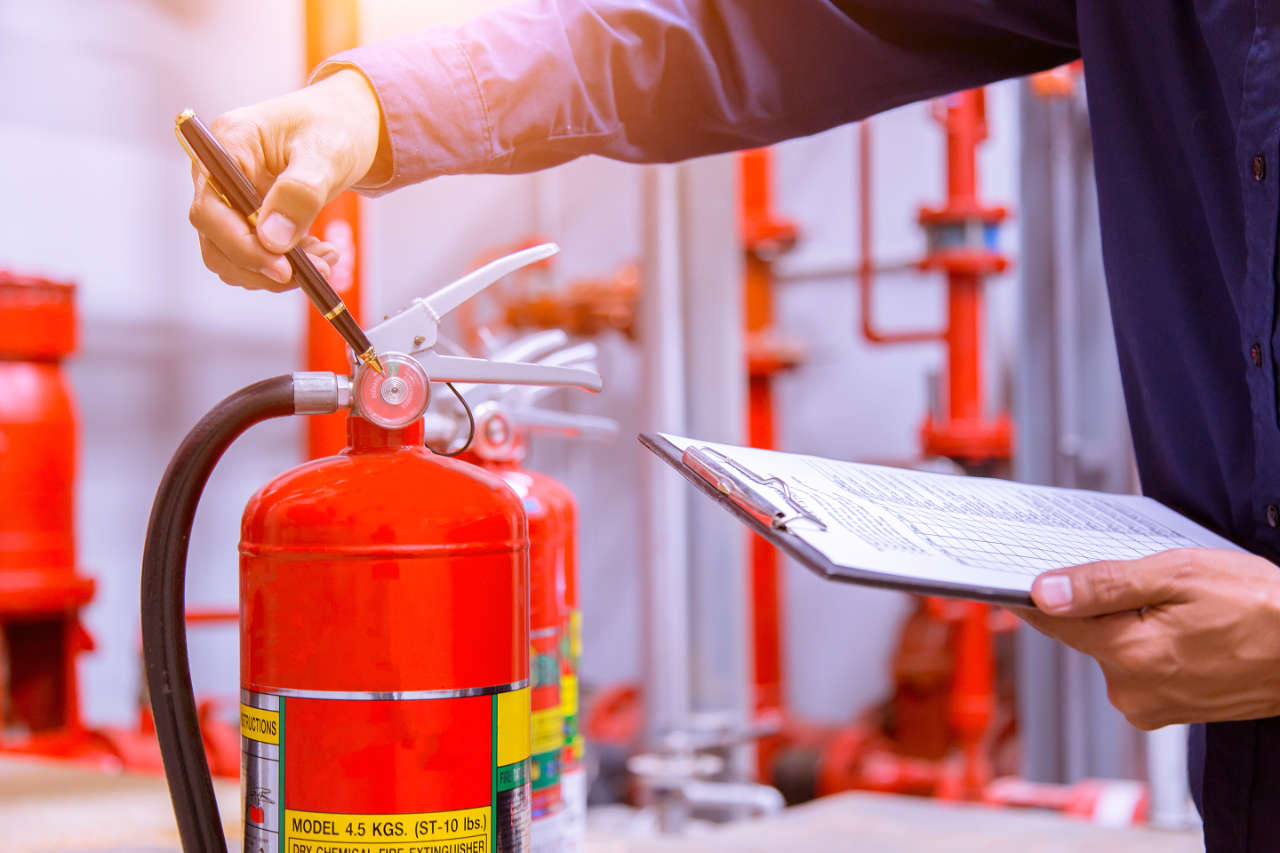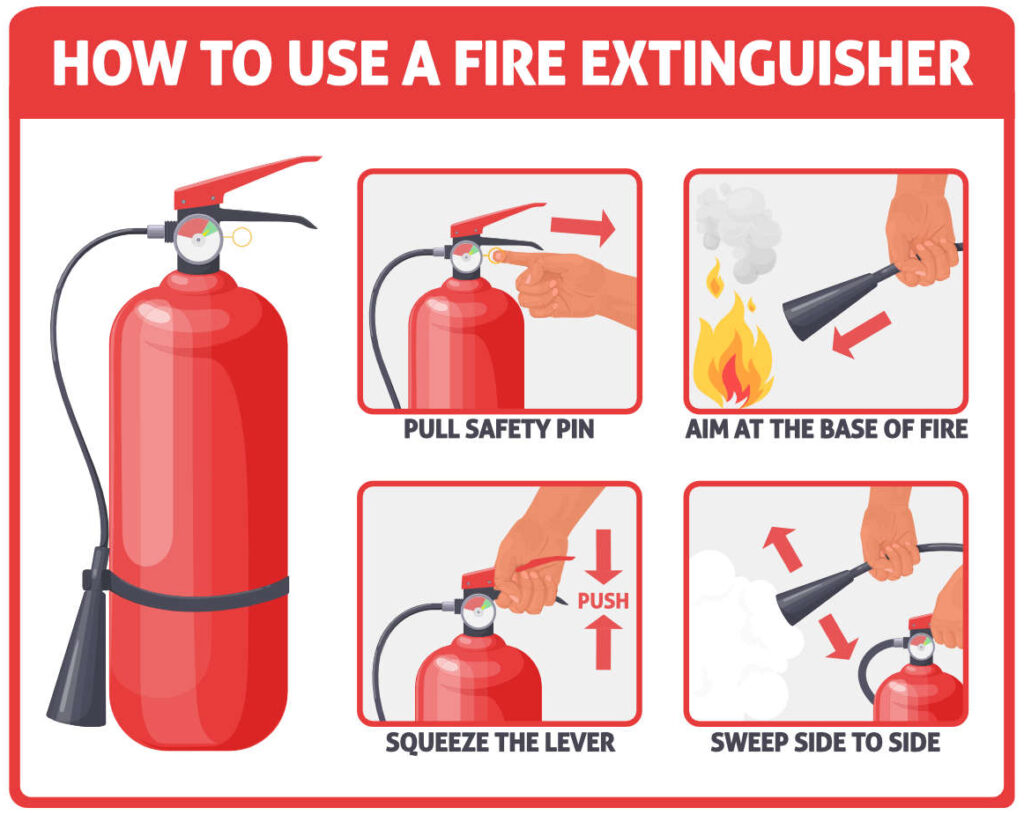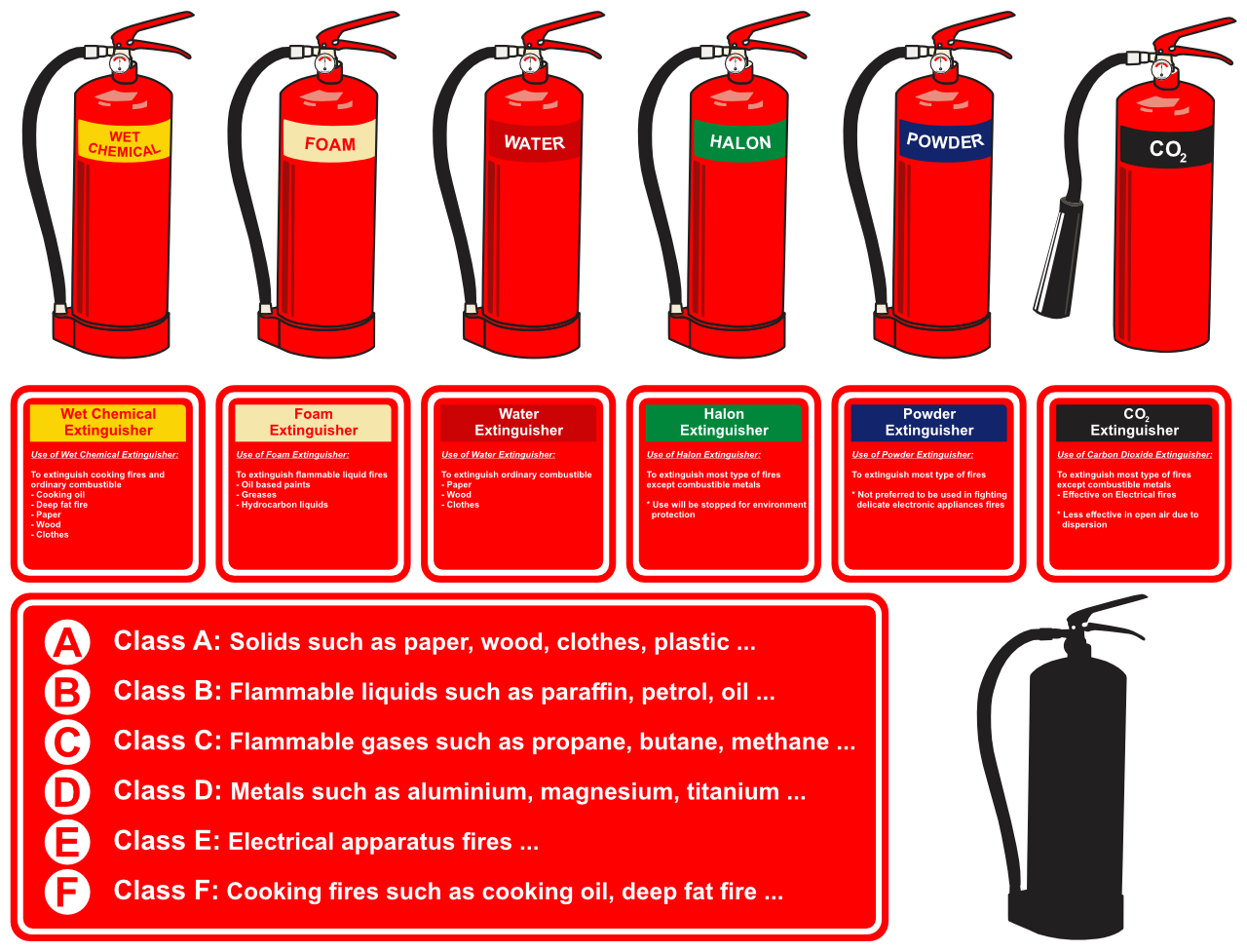
Fire extinguishers are an essential component in tackling and reducing the impact of fire in the workplace. However, fire extinguishers are only fully effective when used correctly, and employers should provide training and support on the correct use of fire extinguishers – such as using the PASS method – to help reduce the risk of harm or damage caused by fire.
There’s little purpose in distributing fire extinguishers throughout a company if employees are unaware of how to use them or if they’re improperly maintained. Ensuring employees are trained on properly handling fire extinguishers – especially employees in fire safety roles such as fire marshals and fire wardens and how to use them correctly is crucial.
The PASS fire extinguisher technique is an effective and straightforward way to achieve this.
What is the PASS fire extinguisher method?
In the event of a fire, people are advised to refer to the PASS acronym, which stands for Pull Aim Squeeze Sweep.
This is a simplified sequence of actions people should follow to use a fire extinguisher safely and effectively:
- Pull – discharge the extinguisher by pulling the pin at the top.
- Aim – point the nozzle directly at the base of the fire, not at the flames. This helps to prevent the flames from spreading.
- Squeeze – squeeze the fire extinguisher’s handle to release the dousing substance; ensure you apply enough pressure so the substance reaches the fire.
- Sweep – sweep the fire extinguisher from side to side and continue spraying until there are no visible flames or live embers.

Read our guide on the importance of online fire safety training.
Who needs to know about the PASS fire extinguisher meaning?
In a workplace setting, nominating a chosen employee or group to take key responsibility for using fire extinguishers and fire equipment is recommended.
Such workers will have had experience and training to ensure they are better equipped to respond rapidly and take control in the event of a fire. Essential fire safety employees, such as fire marshals and wardens, should be trained in the PASS fire extinguisher technique.
The fire extinguisher PASS technique should be given to all employees as part of mandatory fire safety training, given its simplicity and effectiveness, allowing employees to confidently and safely respond to a fire if safe to do so.
Training employees on the PASS fire extinguisher method can help prevent a fire from spreading and minimise injury and property damage.
Fire extinguisher types and applications
The PASS fire extinguisher method isn’t the only instruction people need to be aware of when putting out fires; understanding the different types of fire extinguishers and knowing which type of fire extinguisher to use in the event of a fire is critical.
Each fire extinguisher type contains different extinguishing substances dependent on the fire it is designed to tackle.
Using the incorrect fire extinguisher on a particular fire source can be futile in putting it out and, in some cases, can increase the fire. For example, gas extinguishes cannot put out fires derived from cooking oils as they can’t penetrate the fat; fire extinguishes that contain water can conduct electricity and, therefore, should never be used to tackle electrical fires.
Workers should be trained on the different types of fire extinguishers, how to recognise them and when to use them.
The UK fire classification categories are:
- Class A – such as wood, paper or textiles.
- Class B – flammable liquids such as petrol, diesel or paints.
- Class C – flammable gases such as propane, butane or methane.
- Class D – metals such as magnesium and aluminium.
- Electrical – live electrical equipment such as lighting, computers and televisions.
- Class F – cooking oils such as vegetable oil, olive oil or butter.

The five common UK fire extinguishers are water, powder, foam, CO2 and wet chemical. The information below details their purpose:
- Water: suitable for Class A fires only.
- Powder: Can be used on Class A, B and C fires. In some cases, a powder extinguisher can be used on electrical fires, but since they’re unable to cool the fire, it could be less effective.
- Foam: Only to be used on Class A and B fires.
- CO2: Must only be used to tackle Class B and Electrical fires.
- Wet chemical: Must be used on Class F fires, although they can be used on Class A fires but are less effective than water.
Fire extinguisher safety tips
The PASS fire extinguisher method is a practical step toward preventing fires in the workplace.
To minimise the chances of a fire, organisations should invest in employee training and information to help mitigate the risk of harm through workplace fires.
Employers should also ensure that fire safety equipment is routinely checked and updated, accessible and readily available in the event of a fire, and that employees are regularly trained in workplace fire safety.
Running regular inspection and maintenance
Fire extinguishers should be subject to routine inspection and maintenance in workplaces.
If a poorly maintained fire extinguisher malfunctions, it can put employees, others and property at risk of harm, and organisations may be liable for negligence. Employers can reduce the risk of these outcomes by ensuring regular checks are carried out on all fire extinguishers within the company.
These checks will flag potential problems ranging from broken nozzles to low pressure. Moreover, inspections must be taken to ensure fire extinguishers are correctly positioned; for example, a wet chemical extinguisher should be near an oil fryer.
Fire extinguisher accessibility
Employers should ensure that all employees and others have clear access to fire extinguishers so they can easily reach and deploy them.
This can allow for a more effective and safer response to the fire and may increase the likelihood of overall employee safety. It’s also imperative that employees know where to locate each fire extinguisher; this can save time and keep them thinking clearly so they can take a rapid, safe and pragmatic approach to extinguish the fire.
Education and training
Ensuring employees understand the concepts of the fire triangle and tetrahedron can help them understand how fires start so they can take steps to prevent workplace fires.
Developed by experienced fire safety consultants, our IOSH Approved, CPD Certified Fire Safety Training covers:
- The common causes of fires in the workplace.
- How to prevent different types of fires.
- Different types of fire extinguishers and their uses.
- How to raise the alarm in the event of a fire.
- What to do in the event of a fire, including safe evacuation procedures.
The course is delivered online at the learner’s own pace, and it is appropriate for businesses of all sizes.
For fire marshals, we offer Fire Marshal Training which covers everything in the Fire Safety course plus the additional knowledge fire marshals specifically need for their role.
Fire safety is also part of our comprehensive course, IOSH Working Safely. The course covers the causes of fires, what to do on discovering a fire, and what action to take when the fire alarm sounds.
Praxis42 is a member of the Fire Protection Association and an Affiliate member of the Institute of Fire Safety Managers (IFSM).

Rob Sherman
Director of Fire Safety

